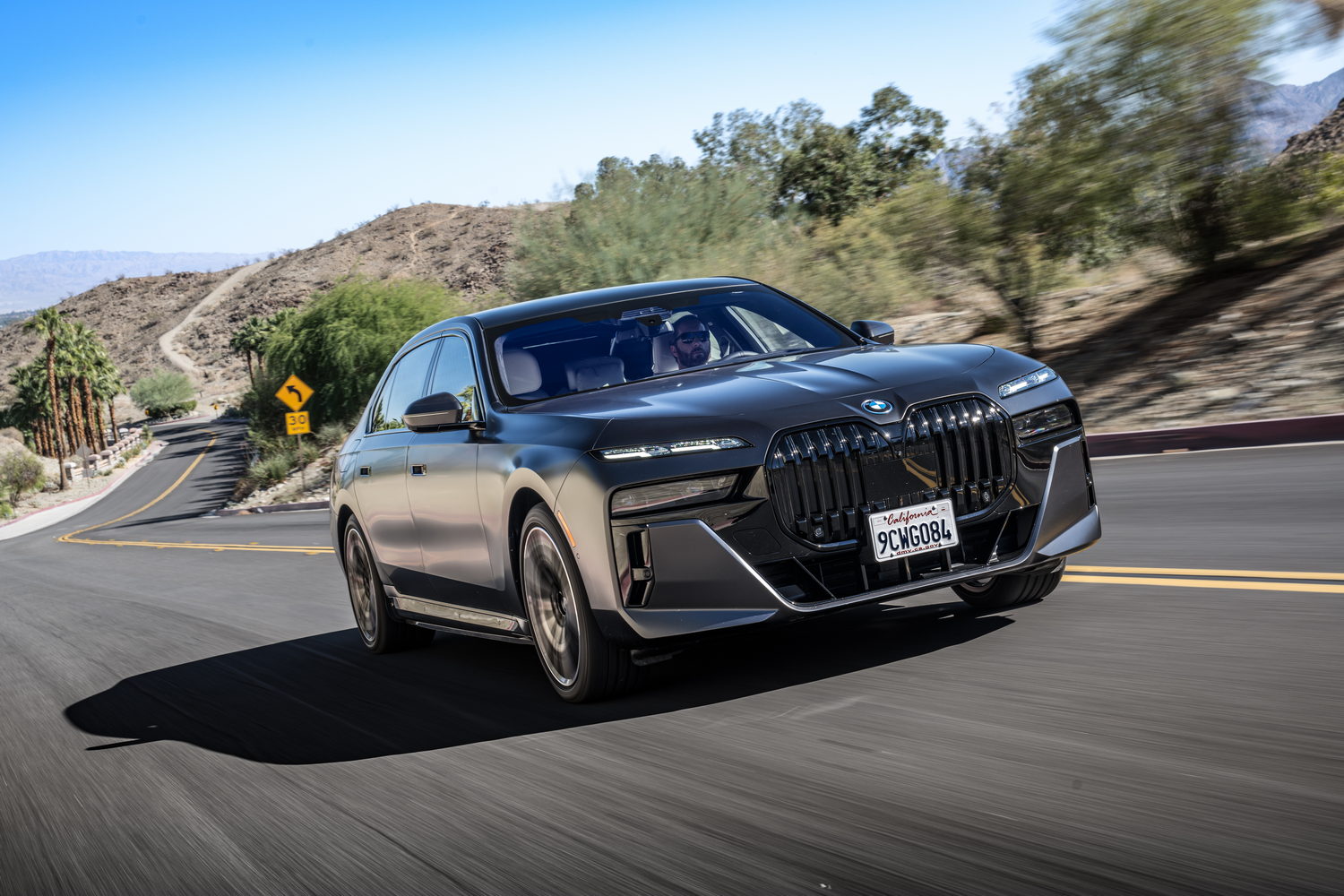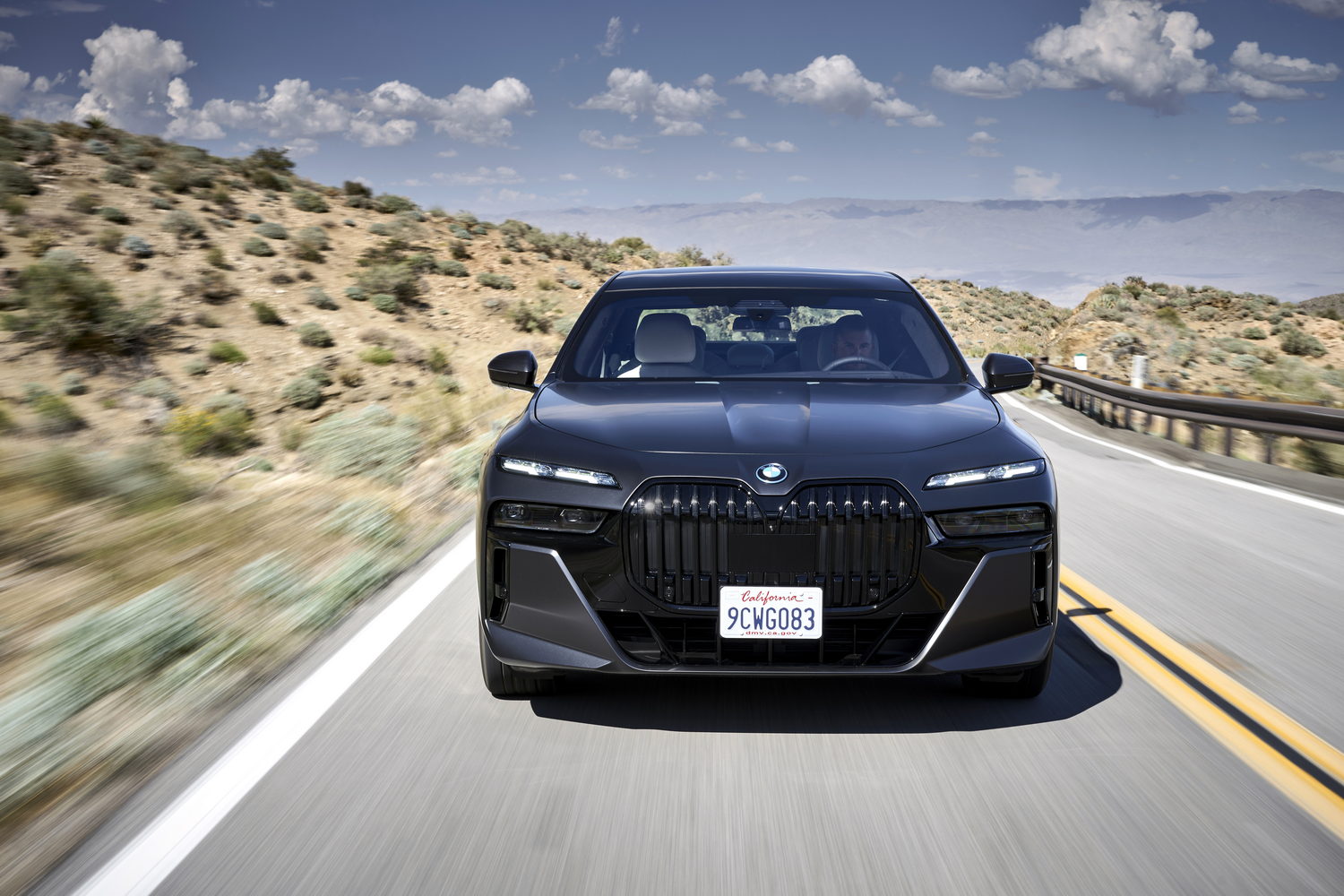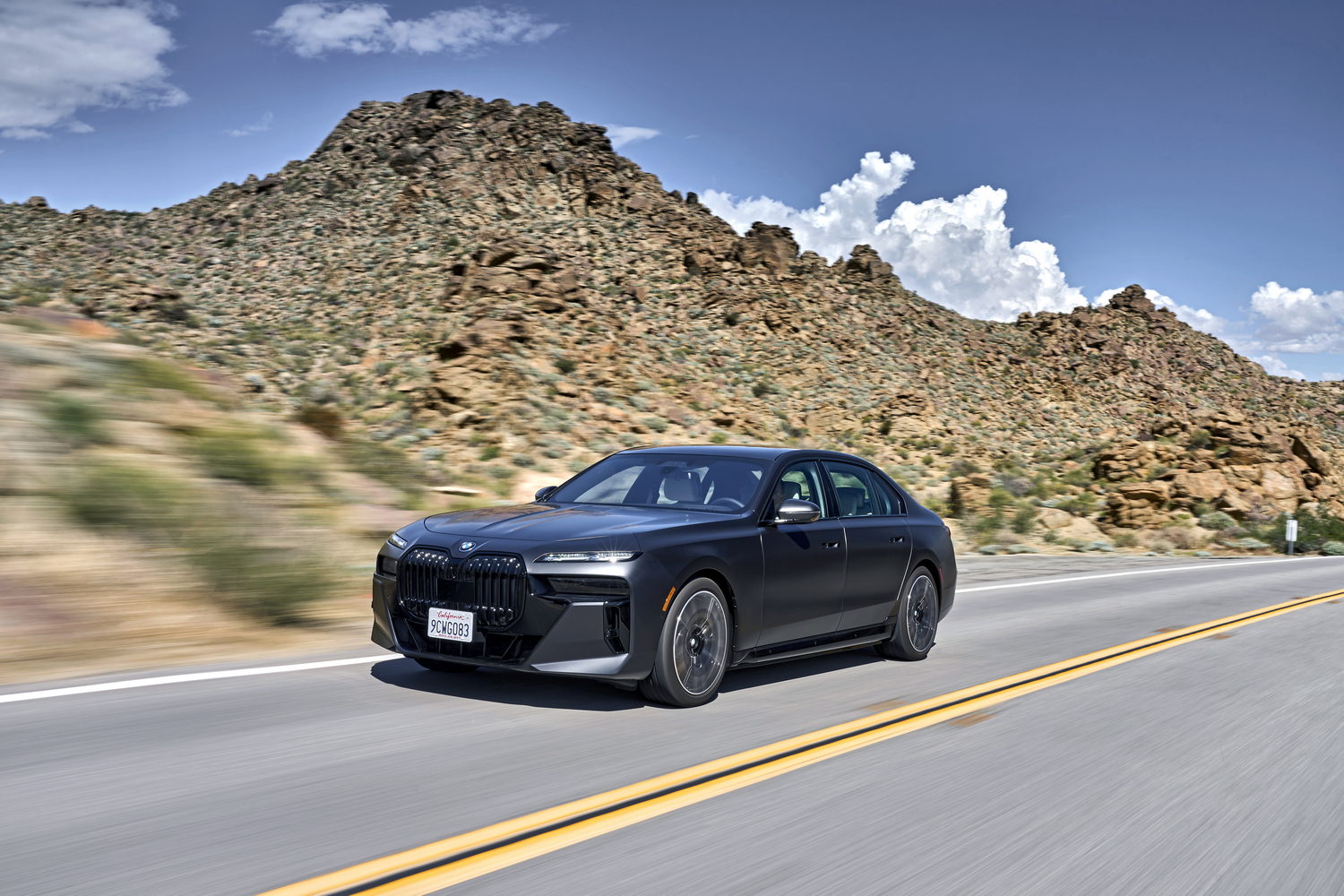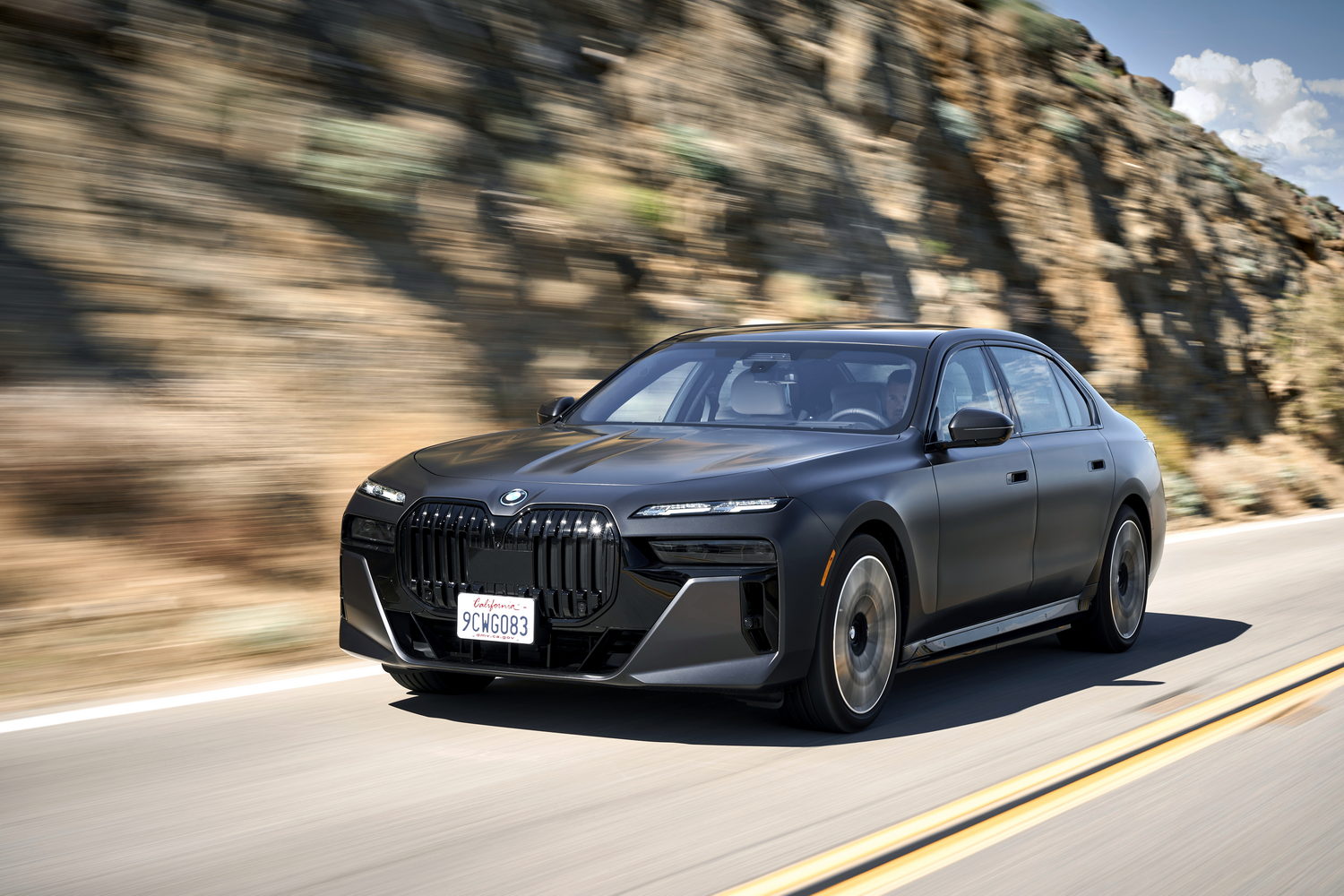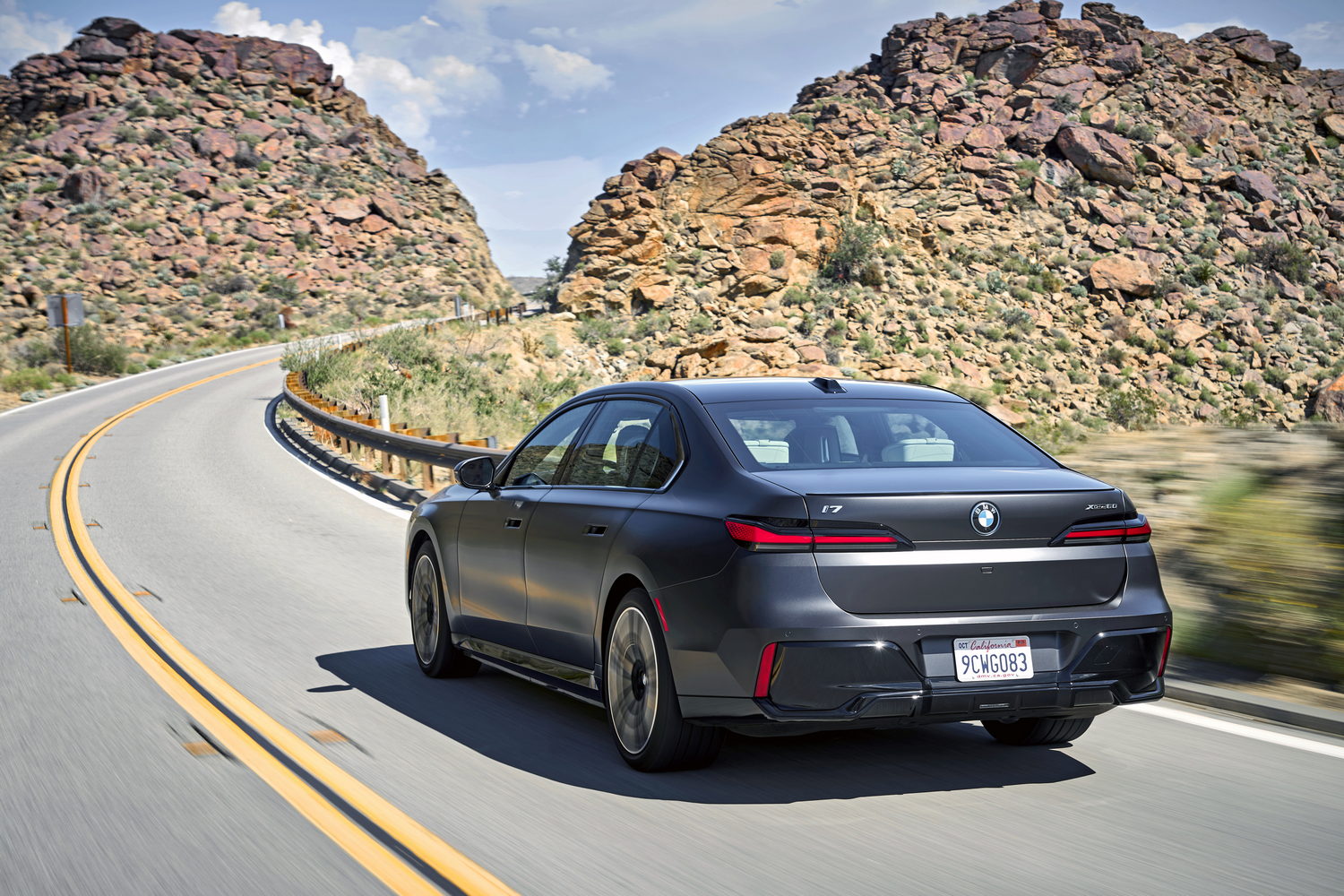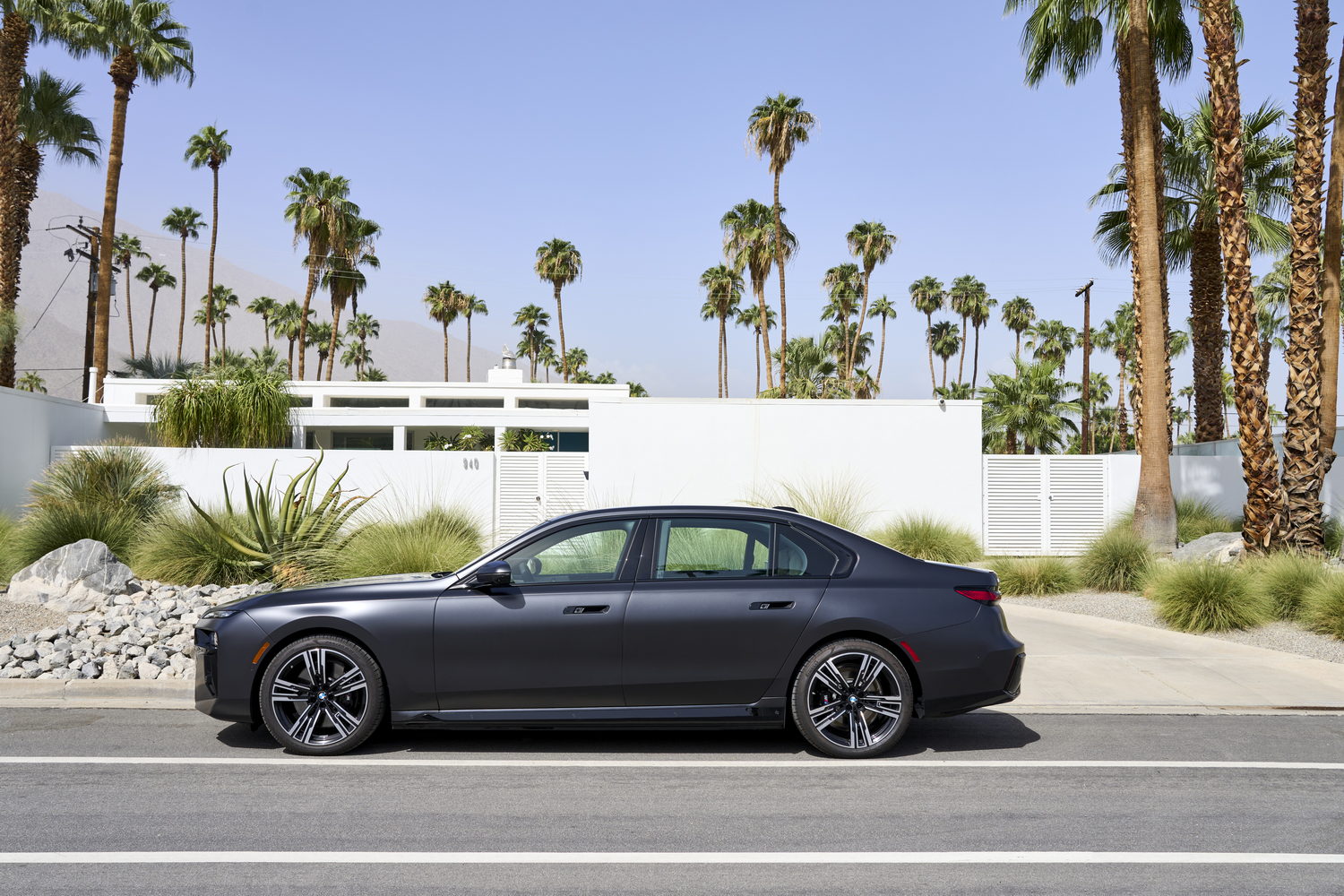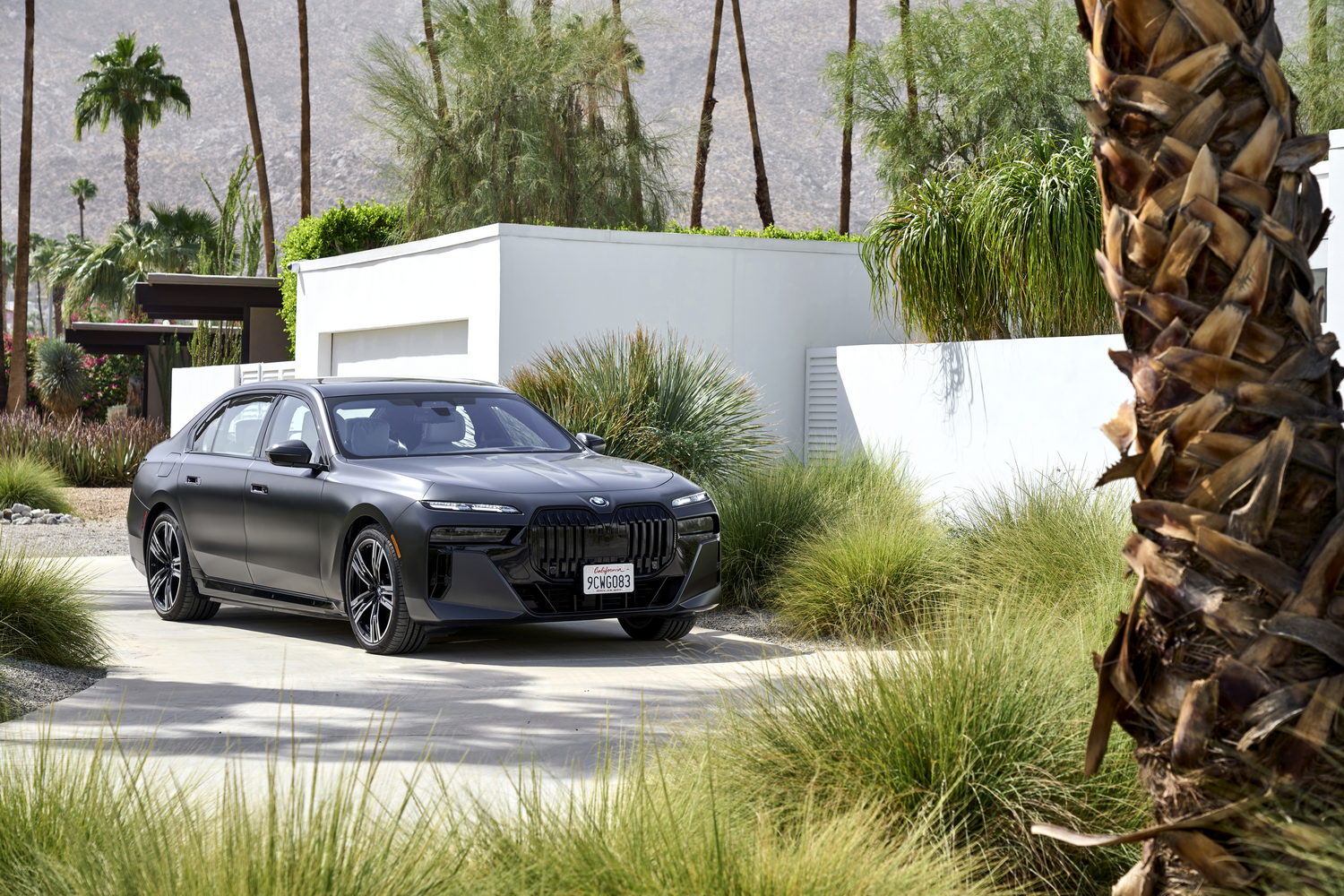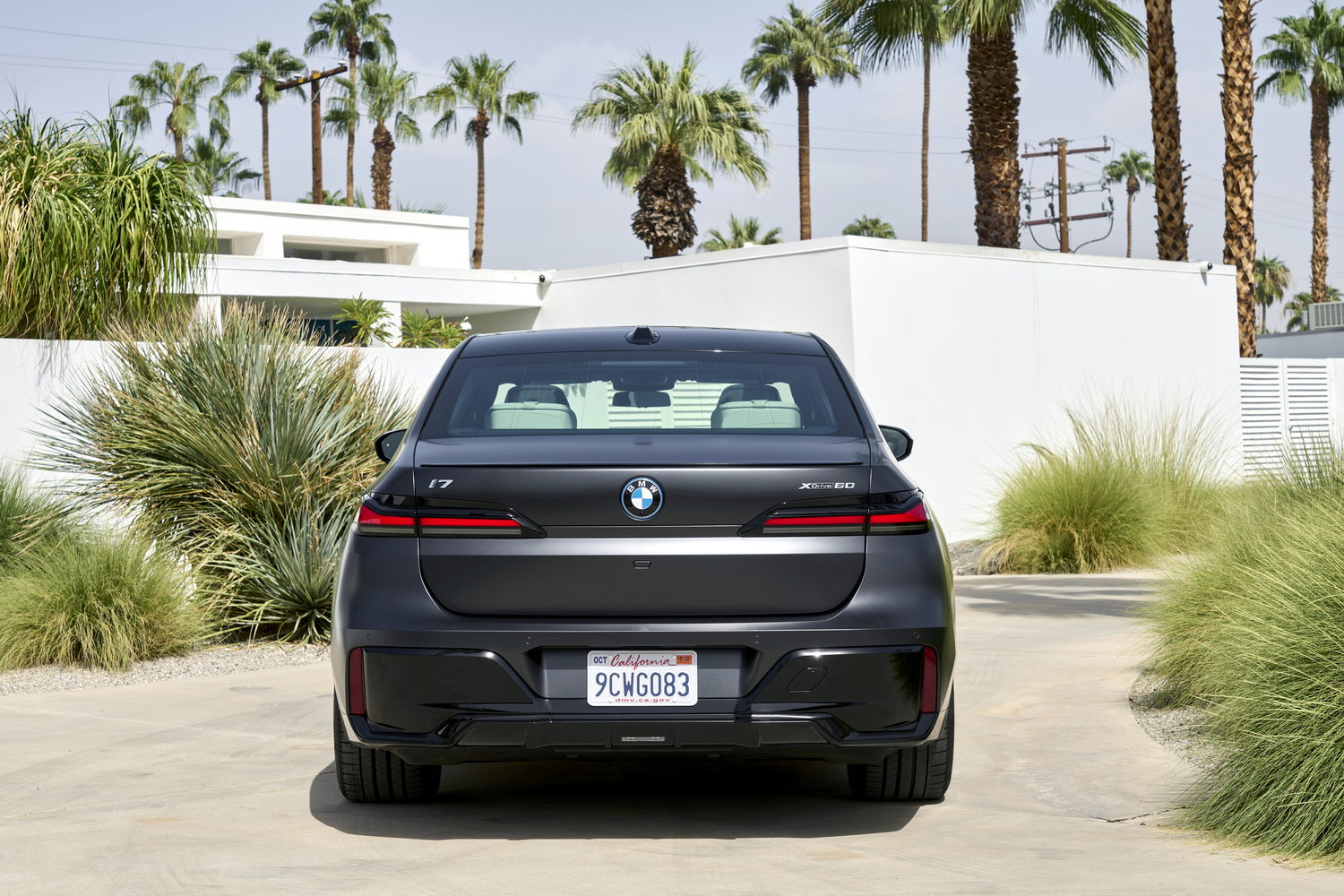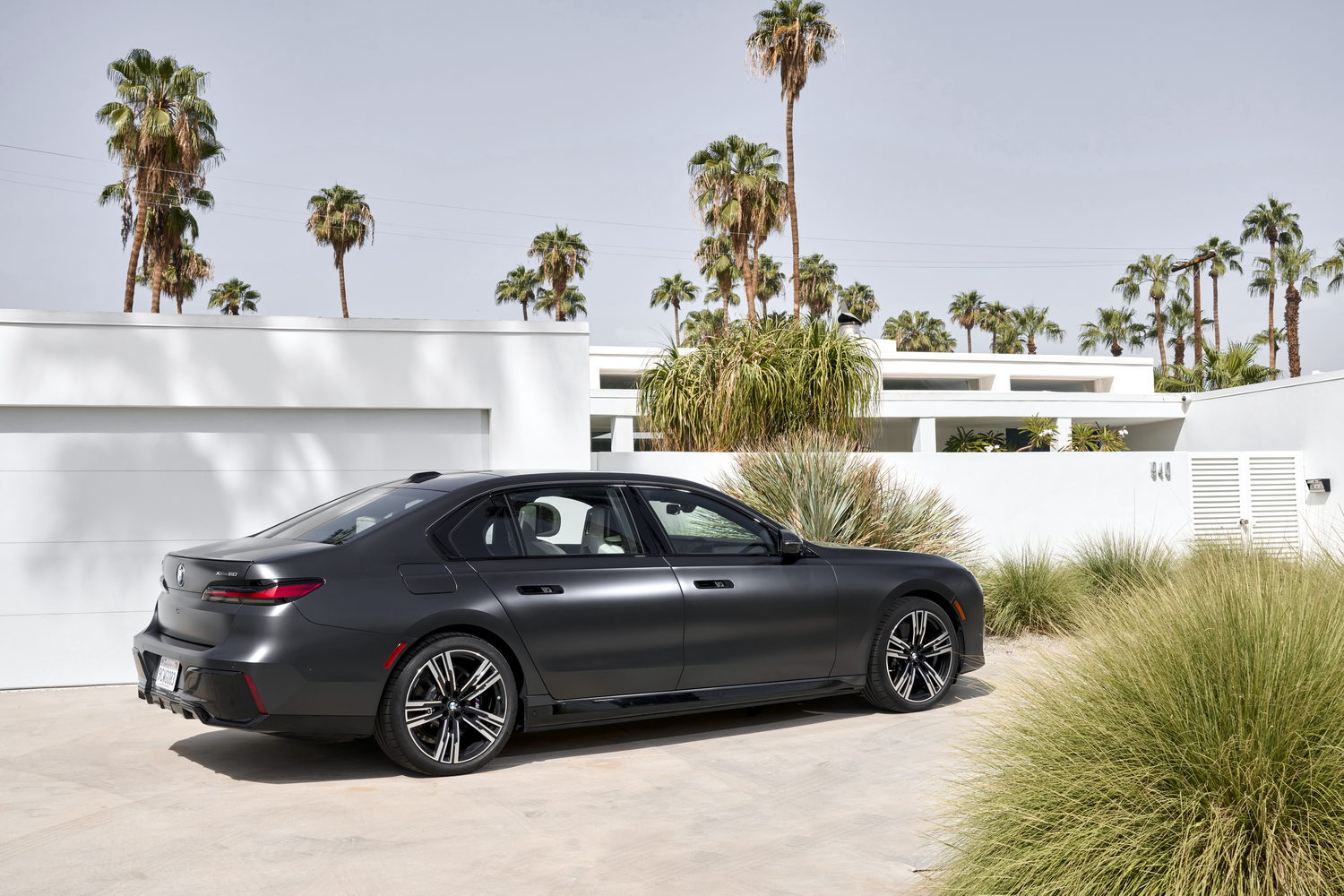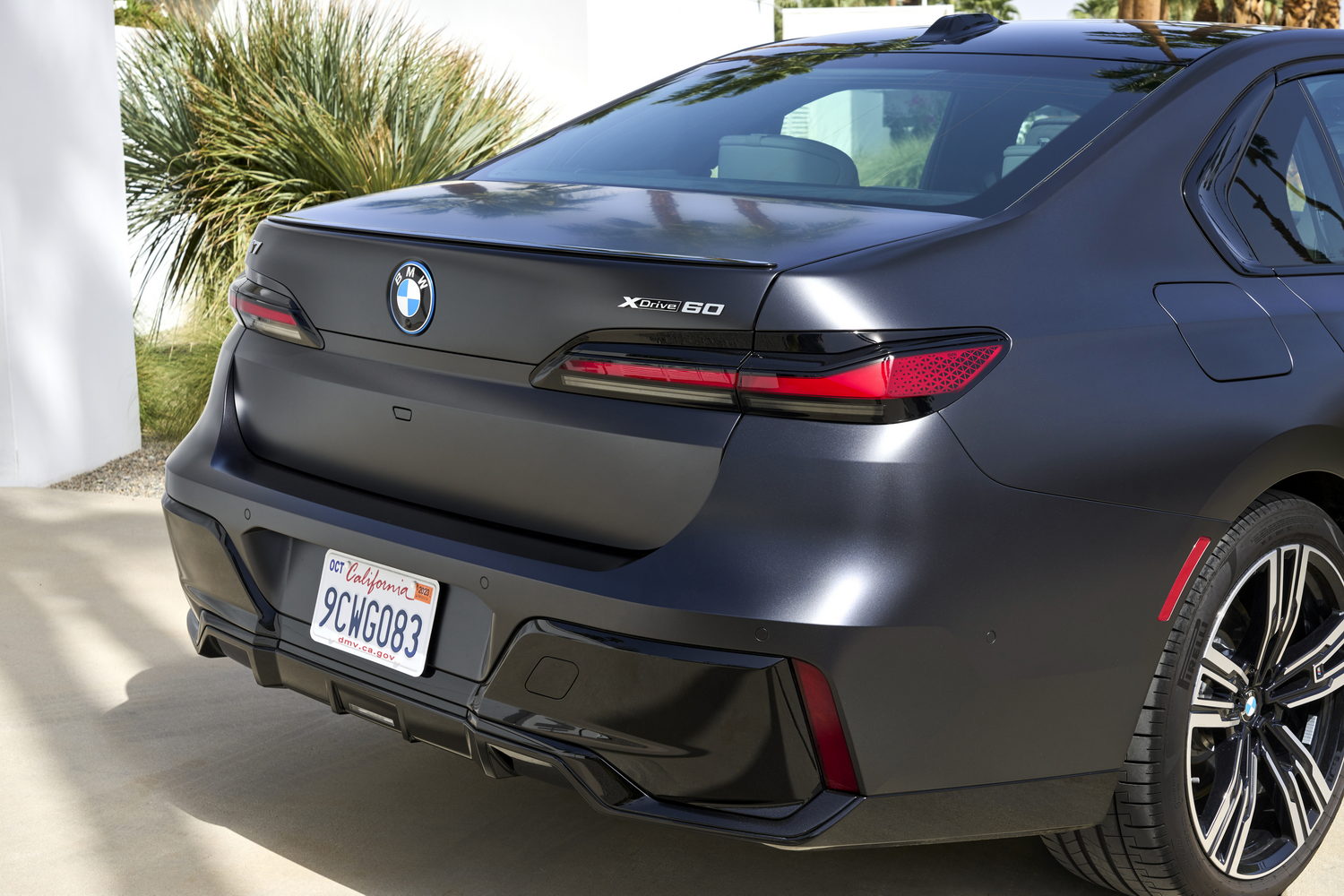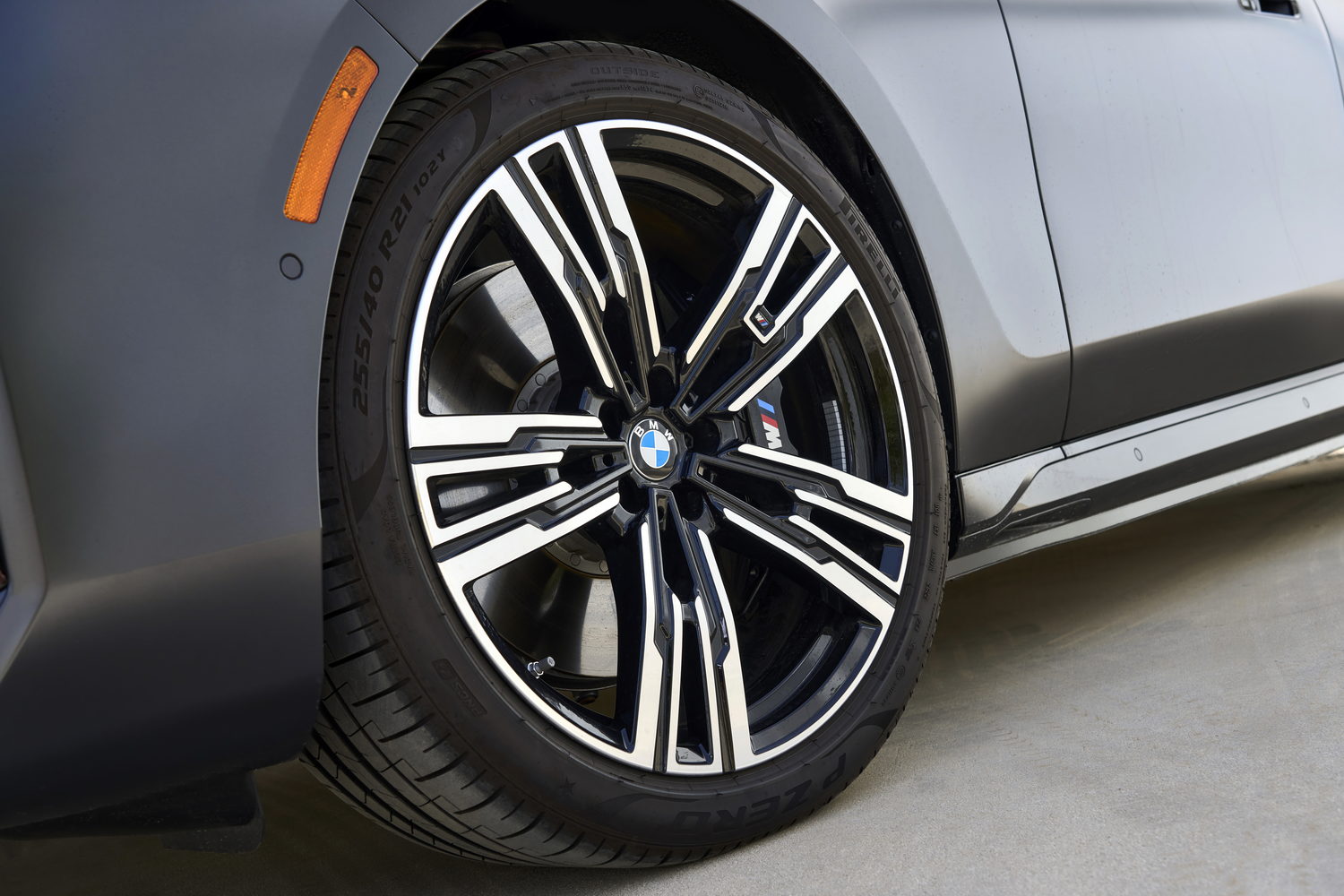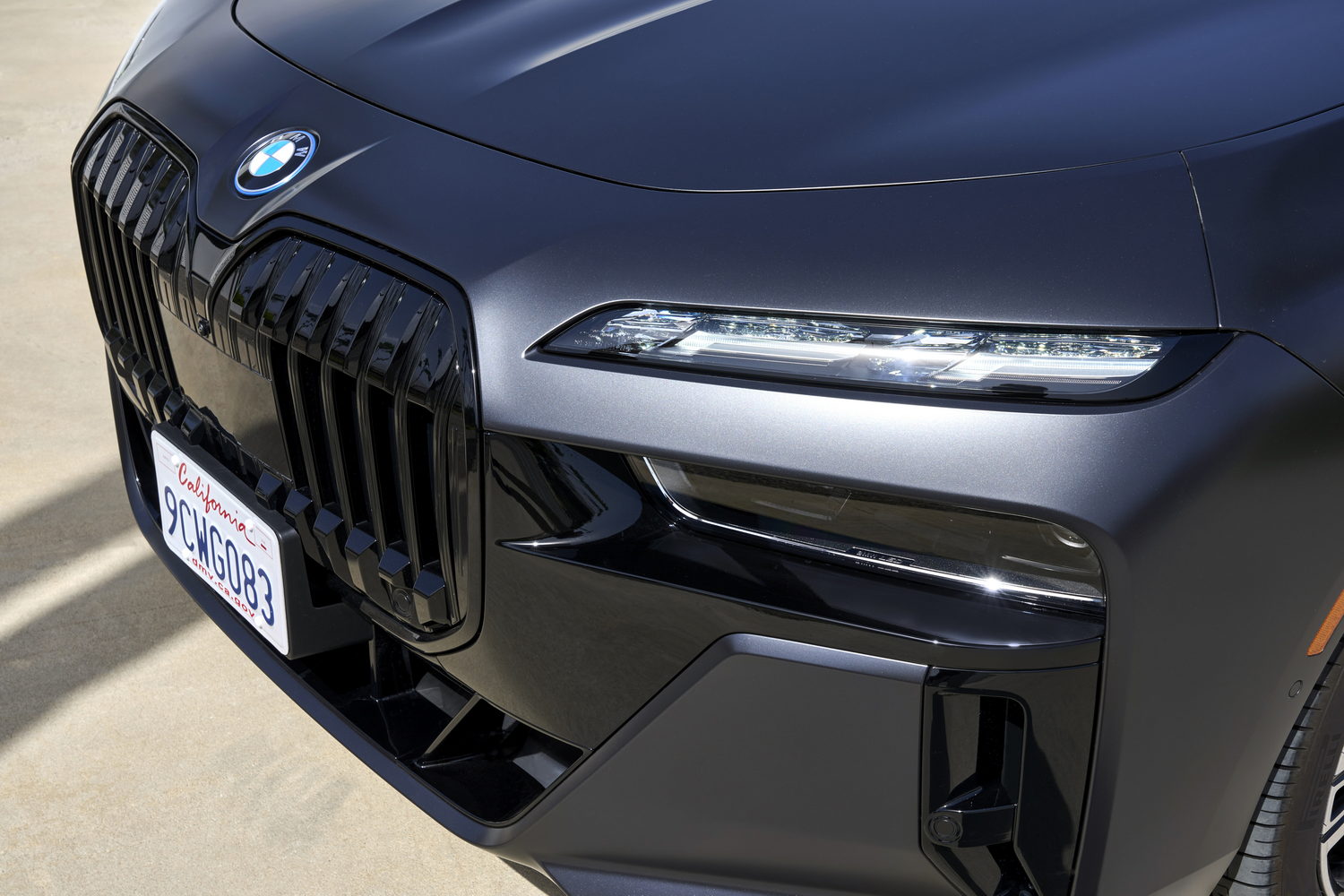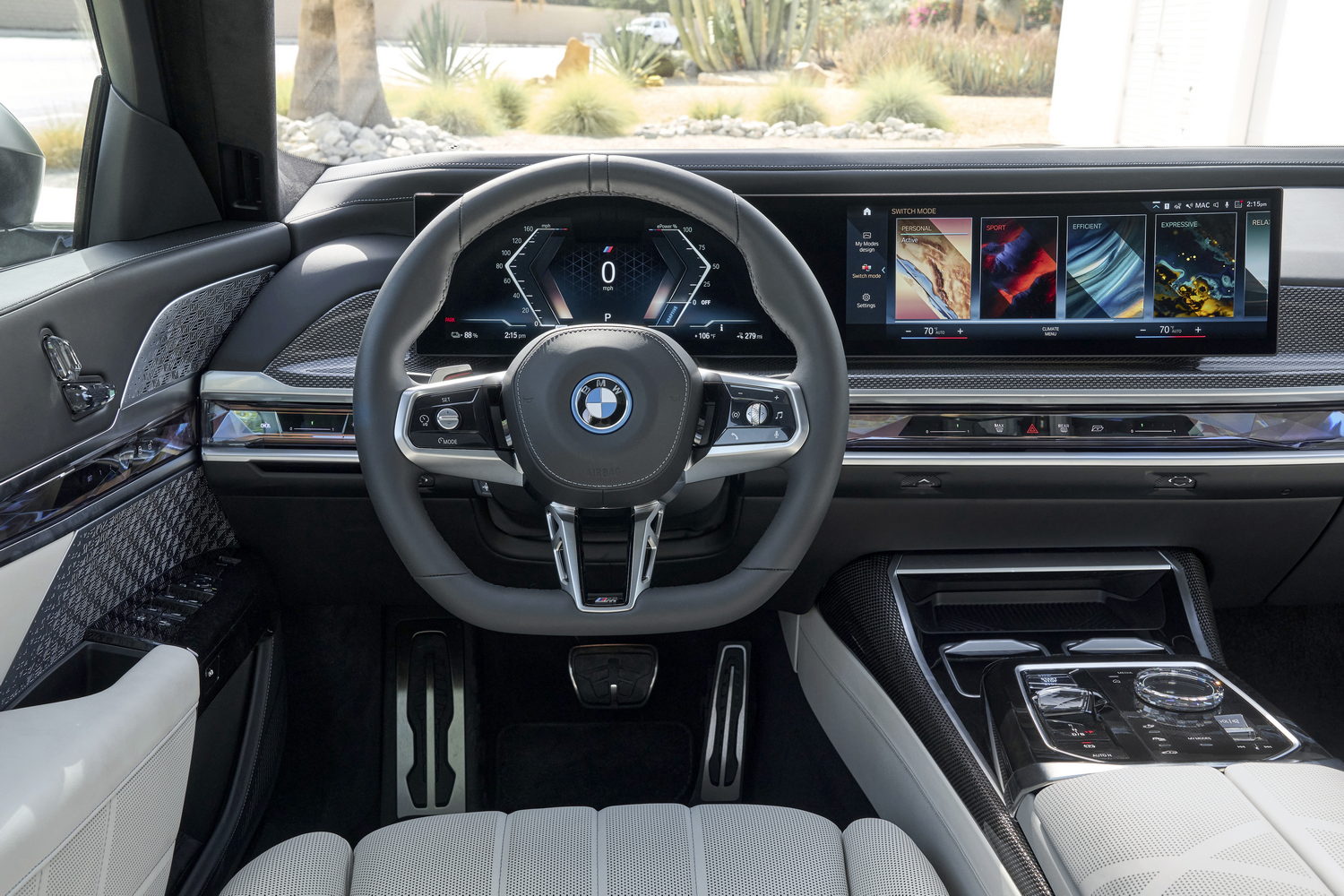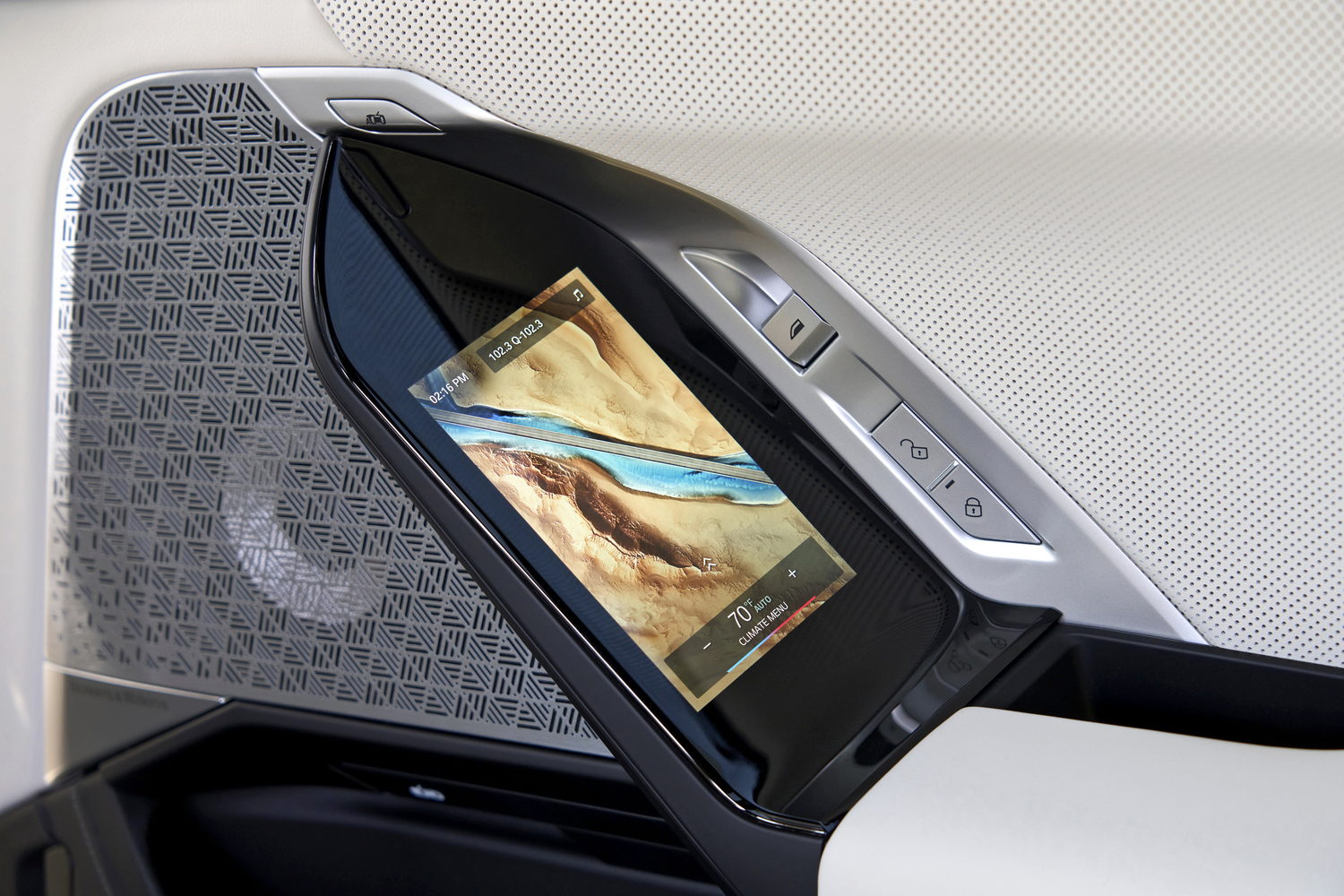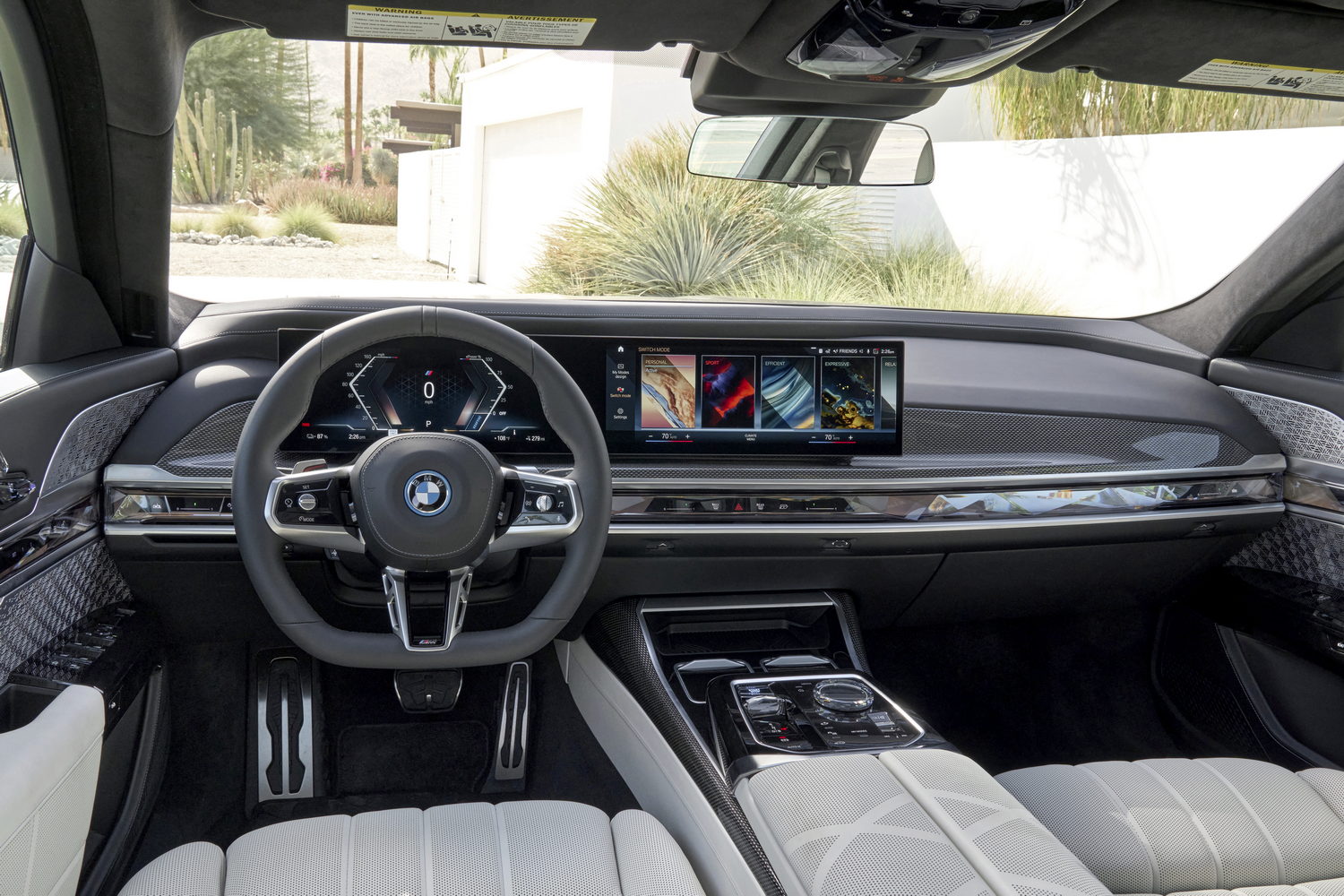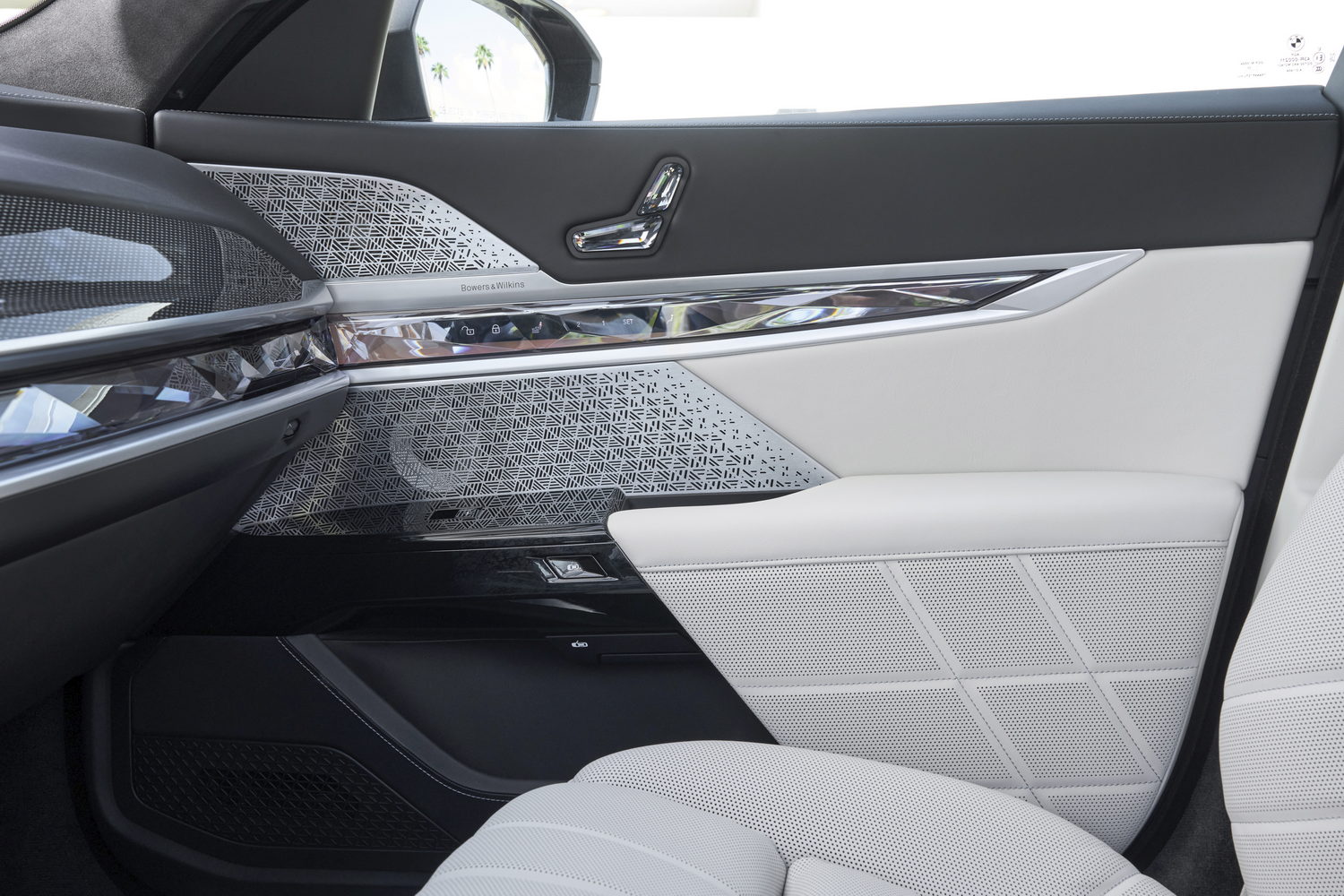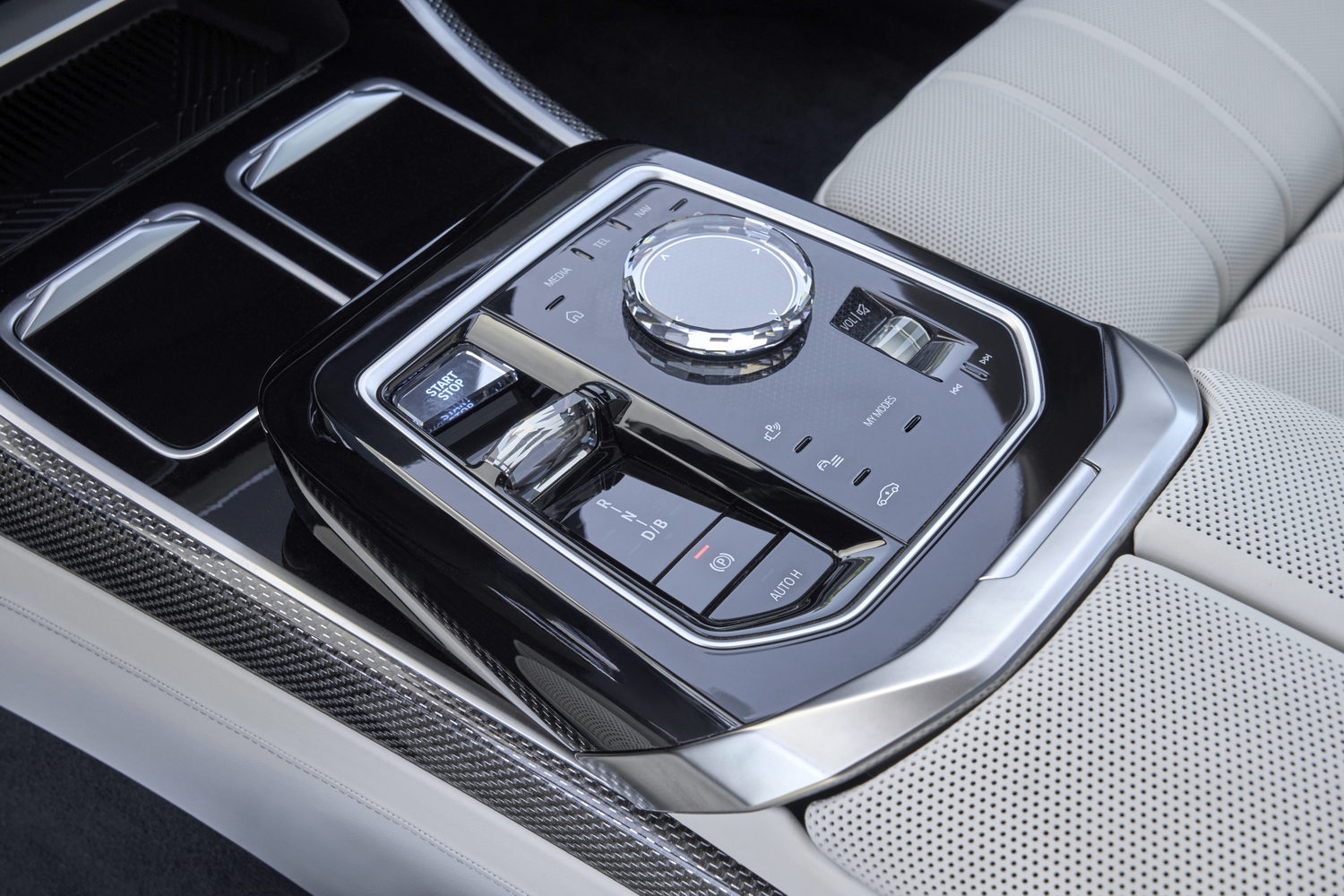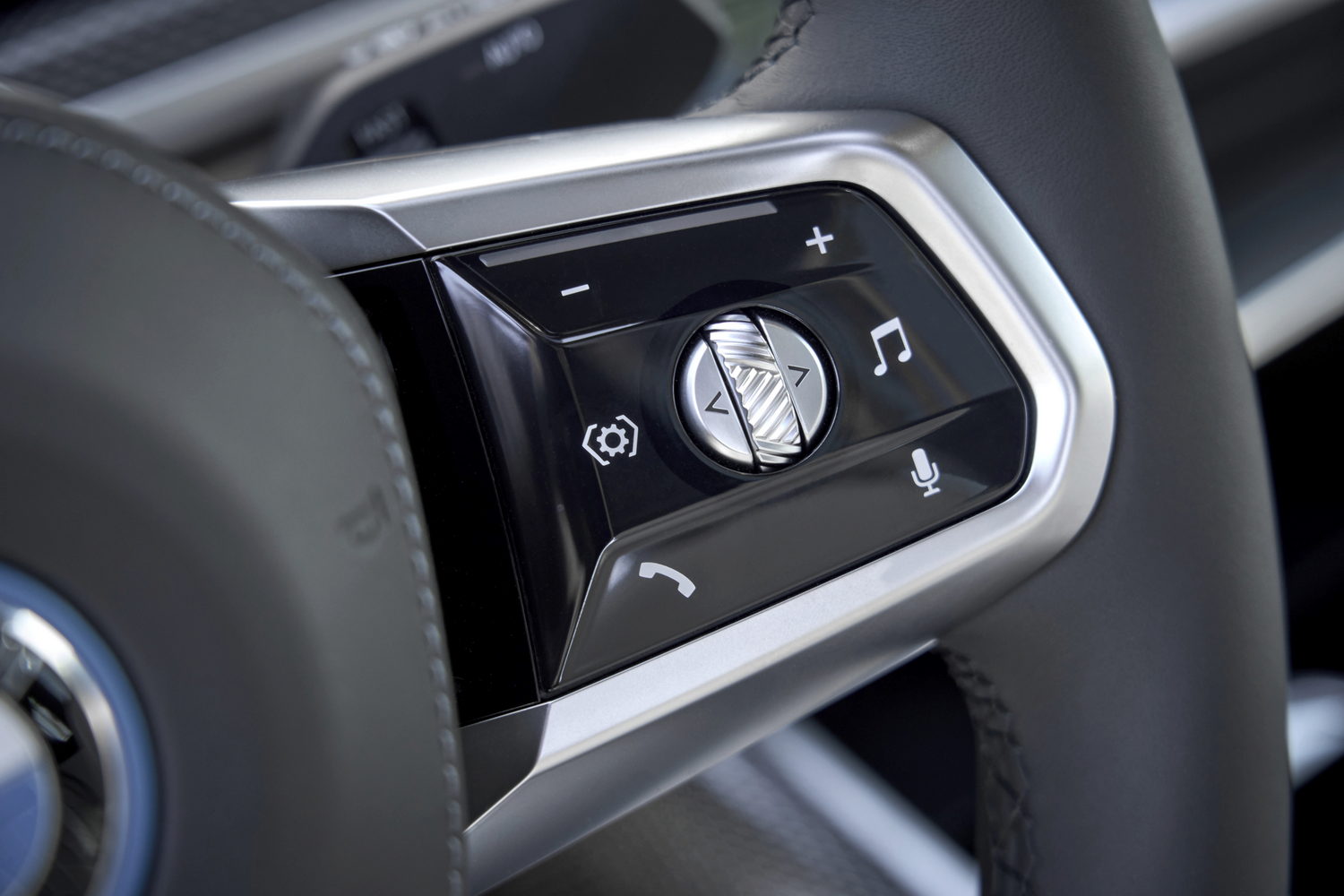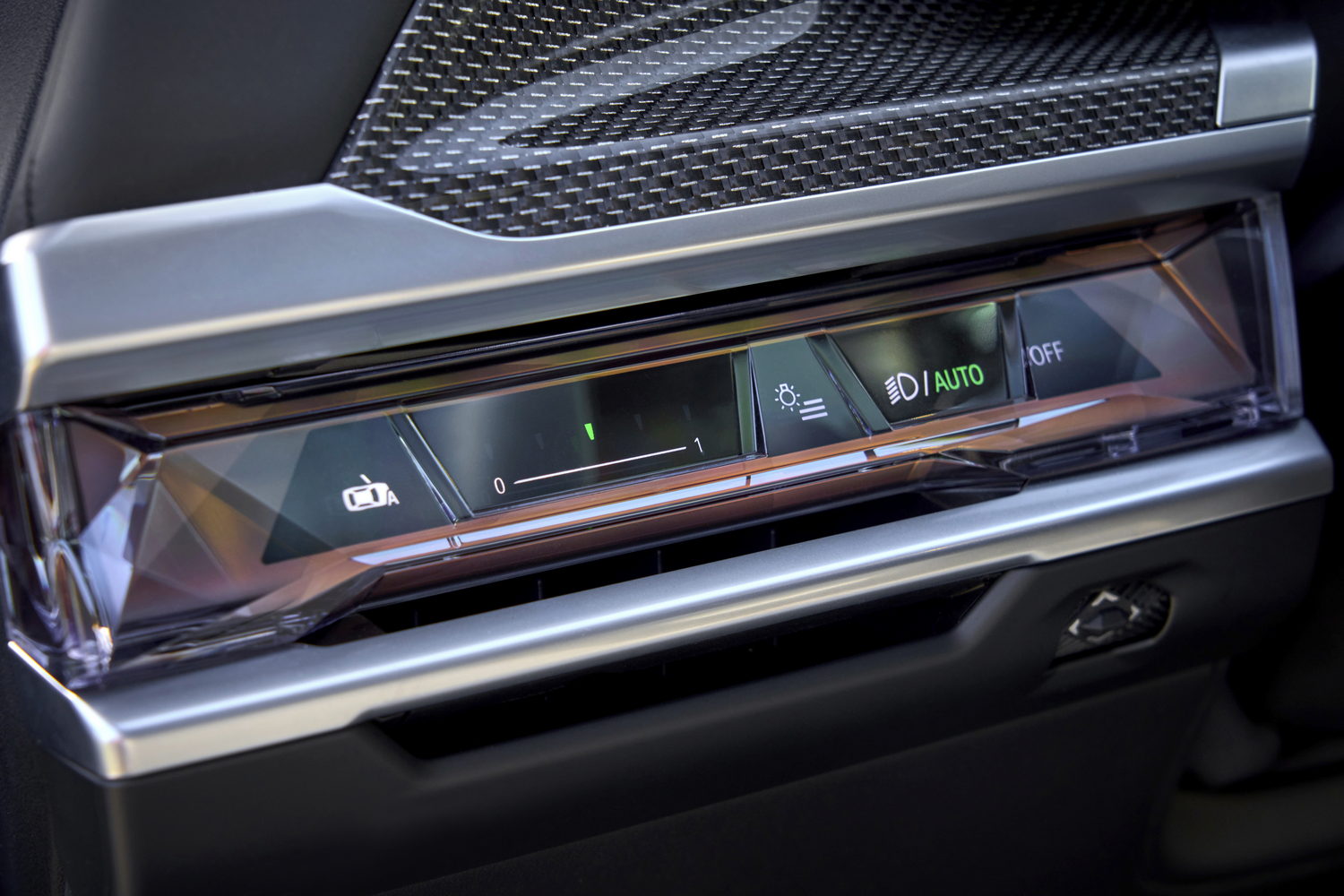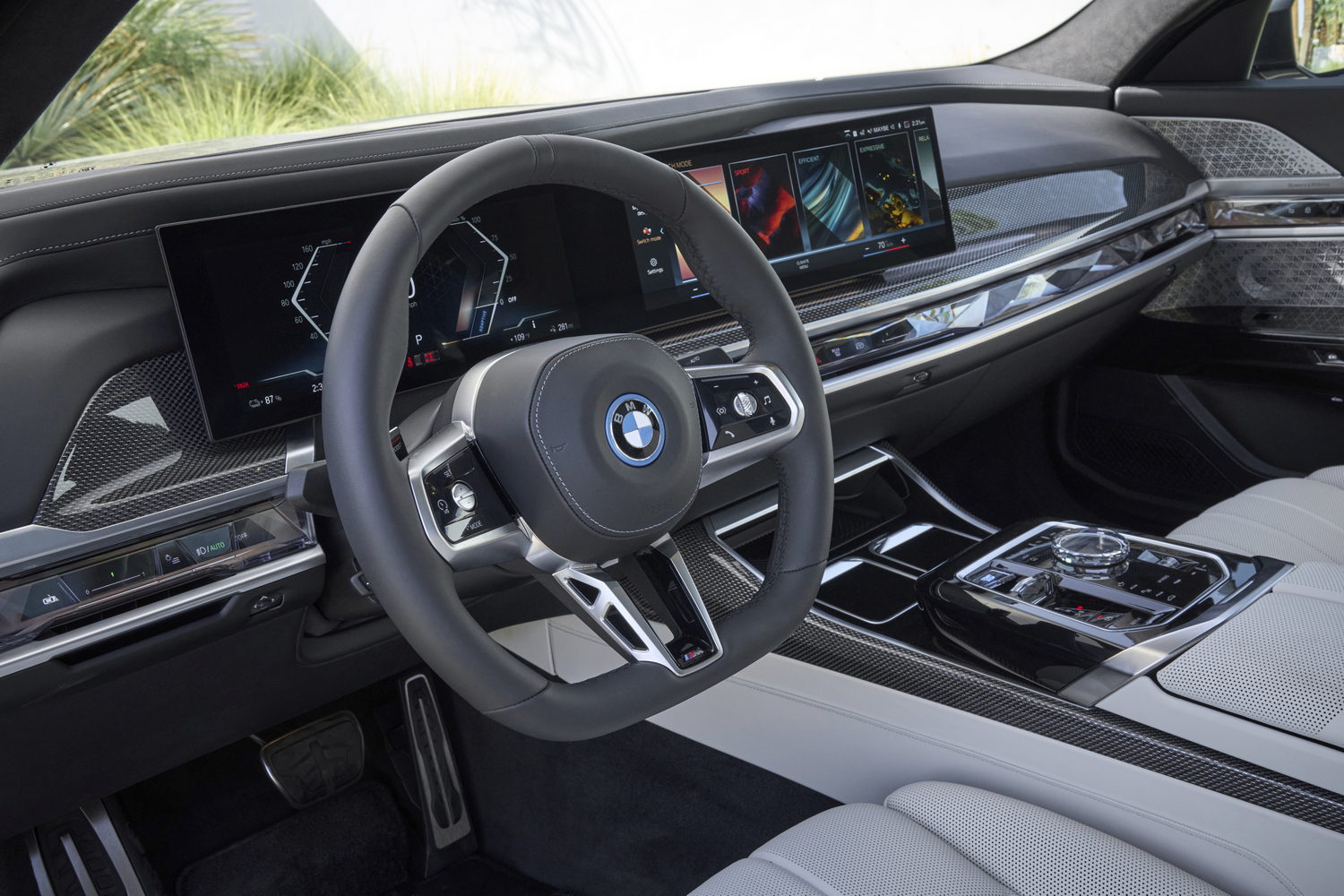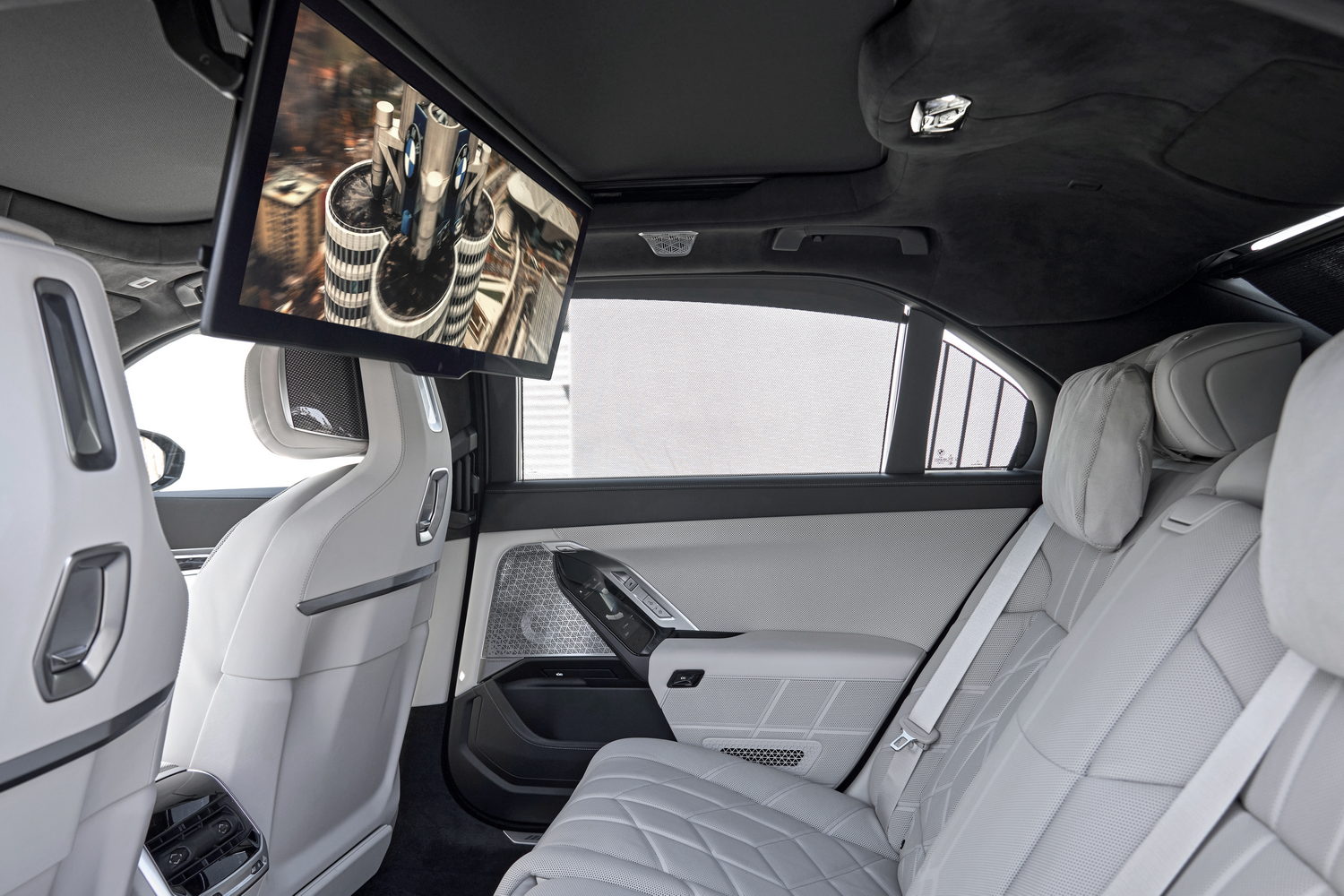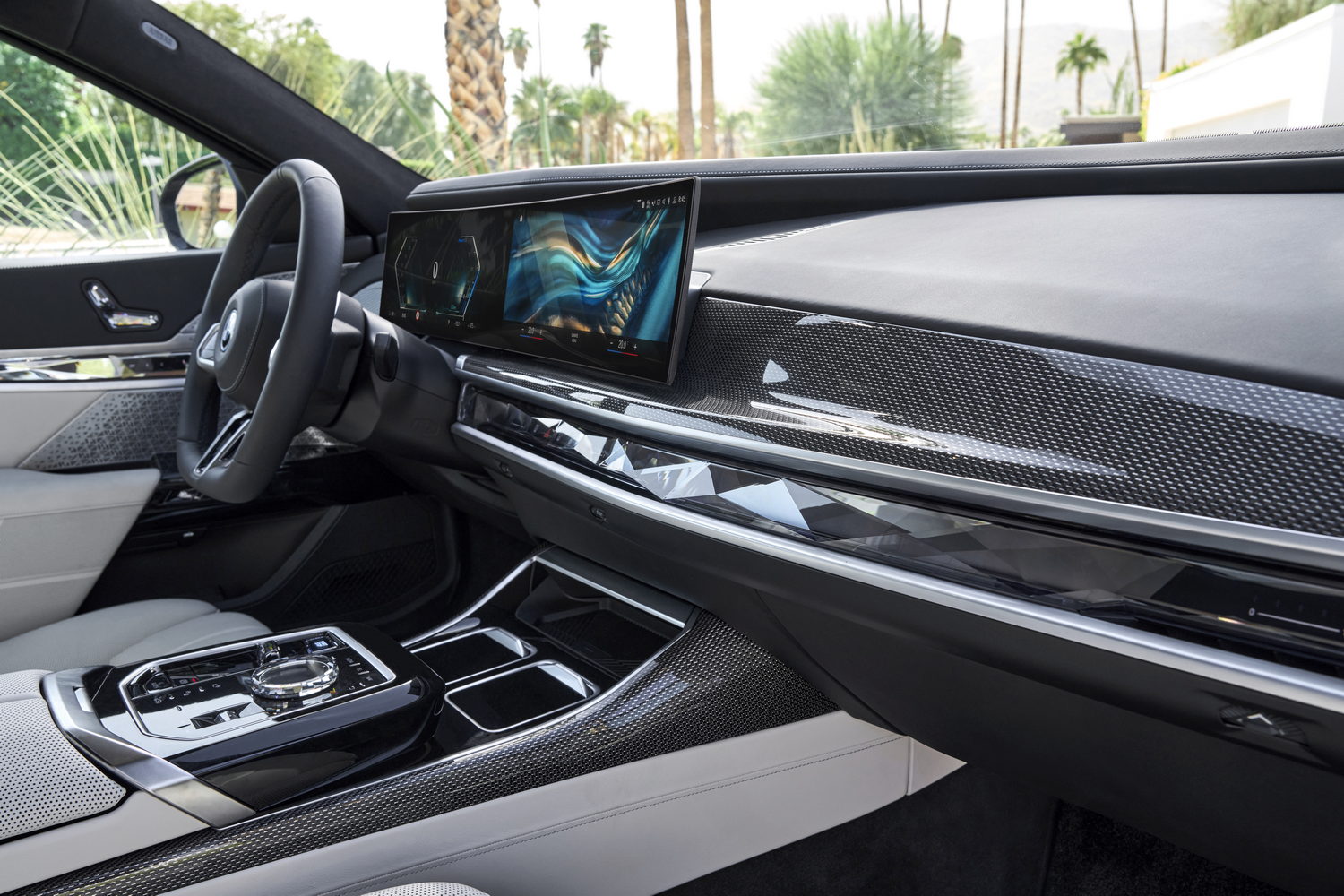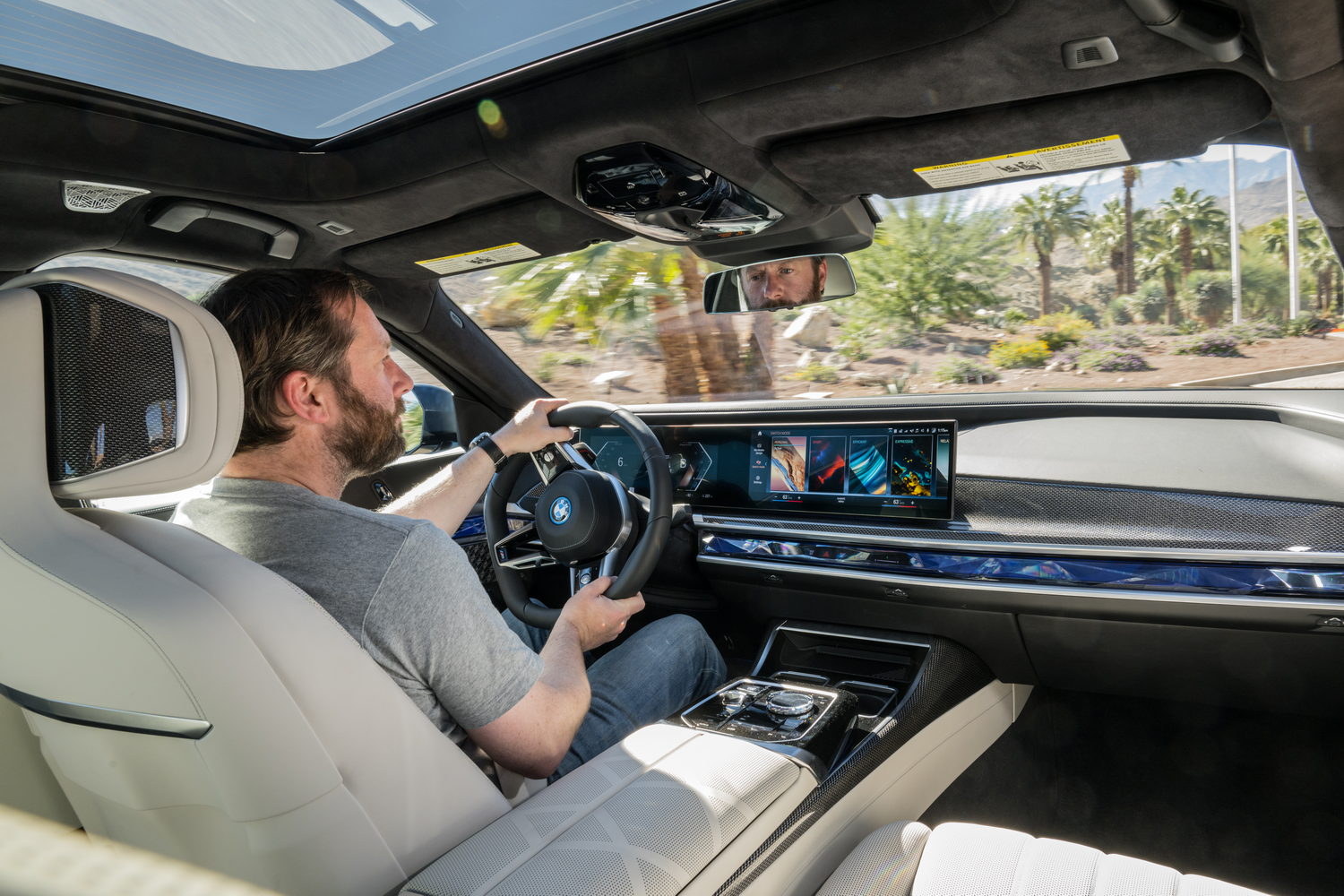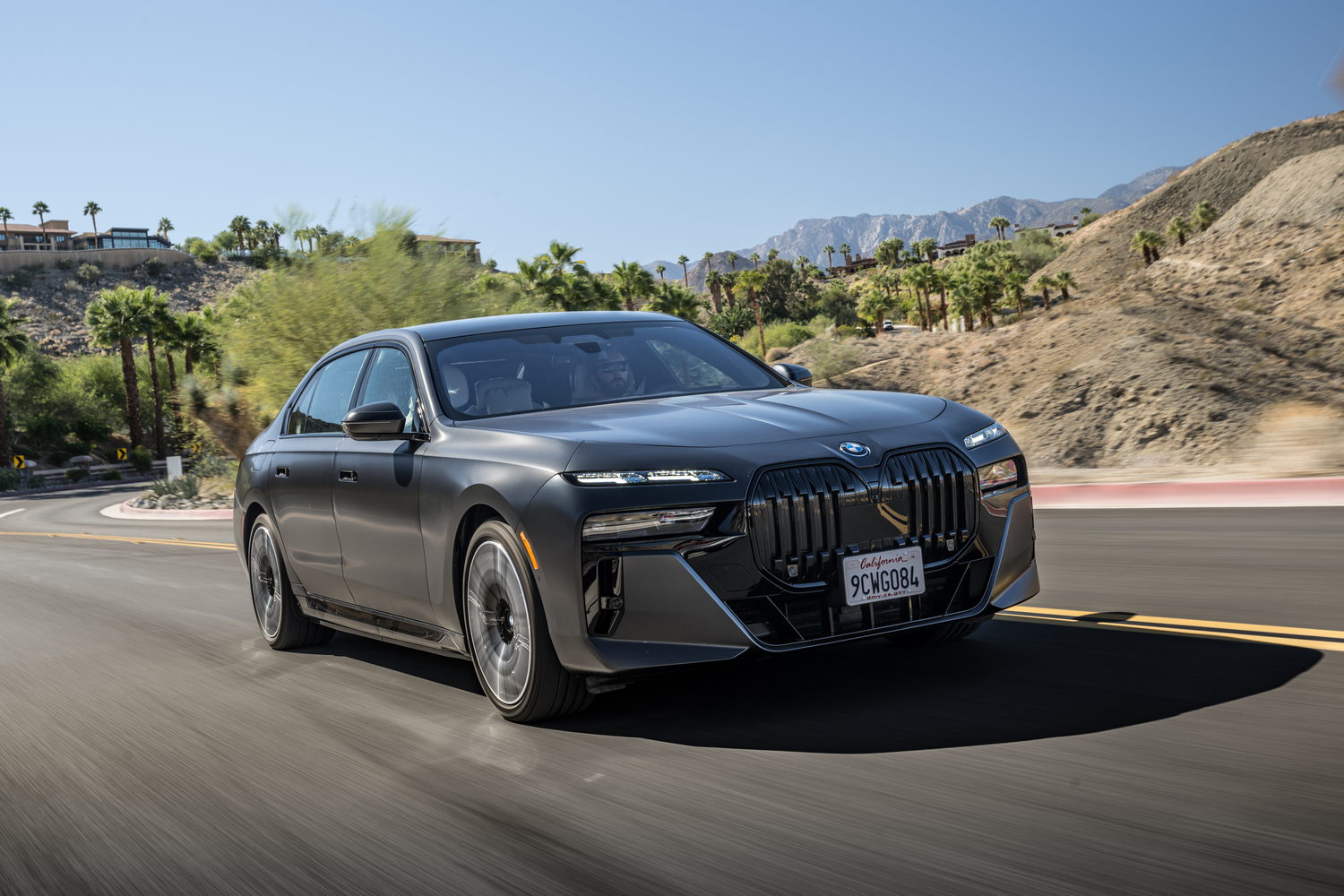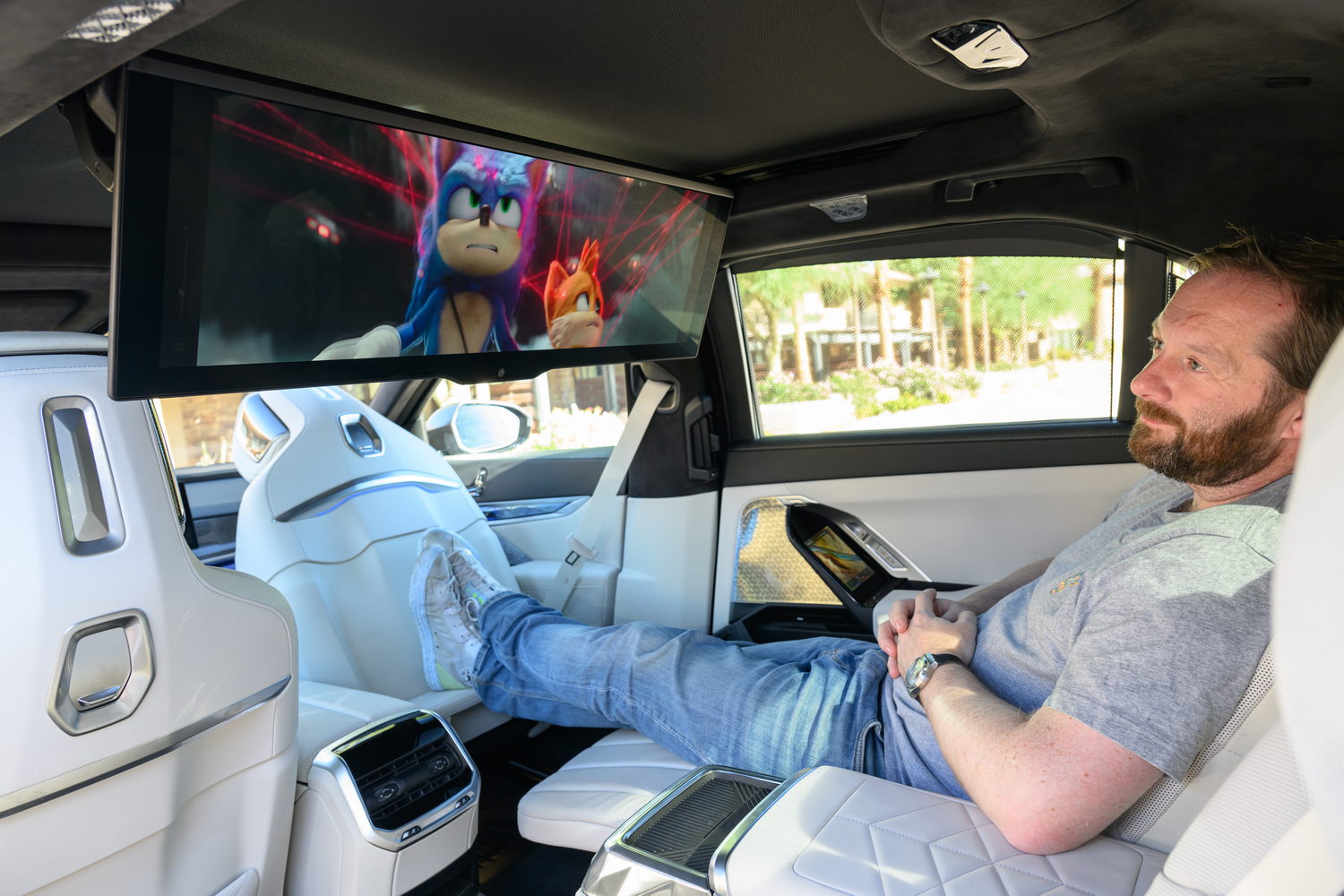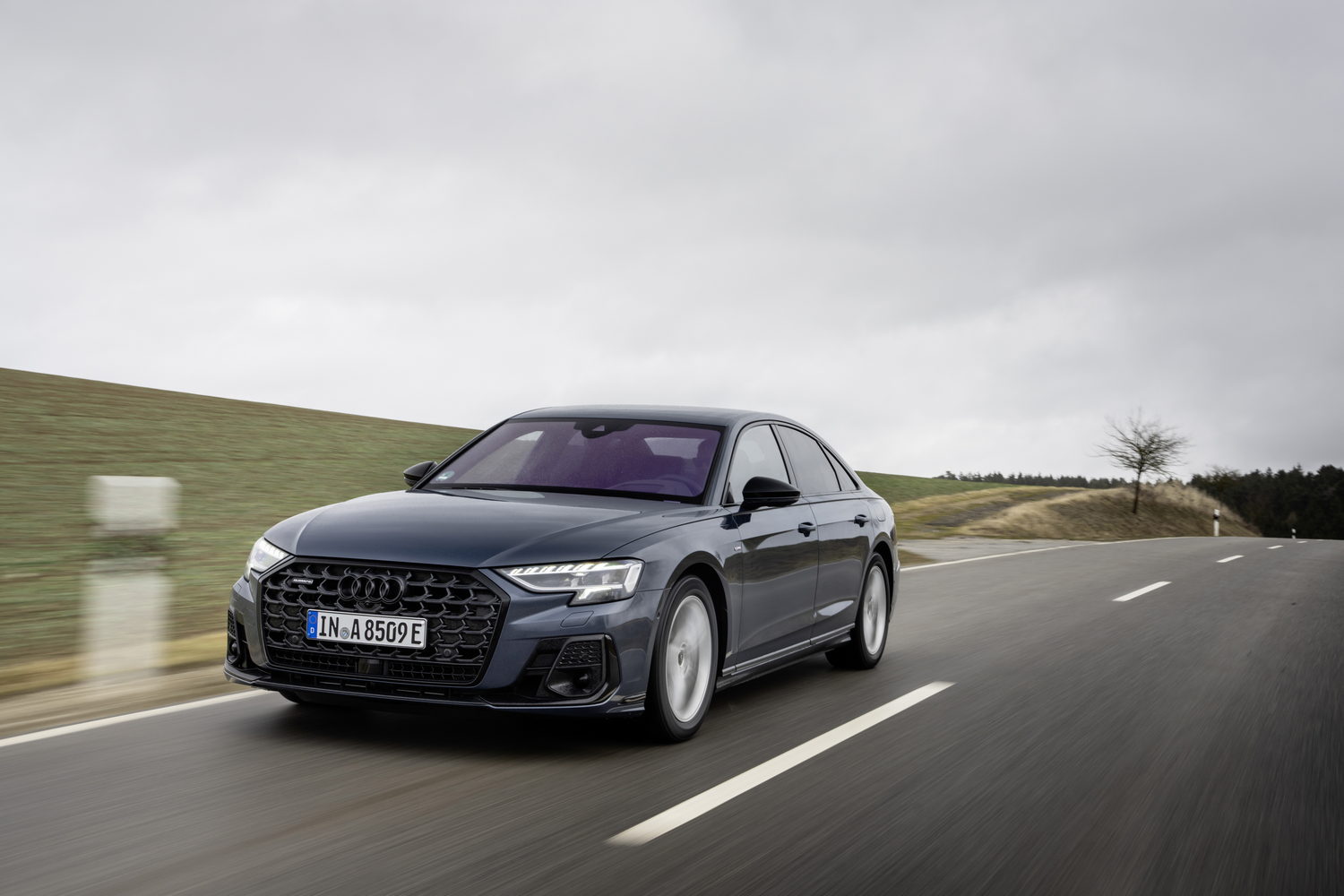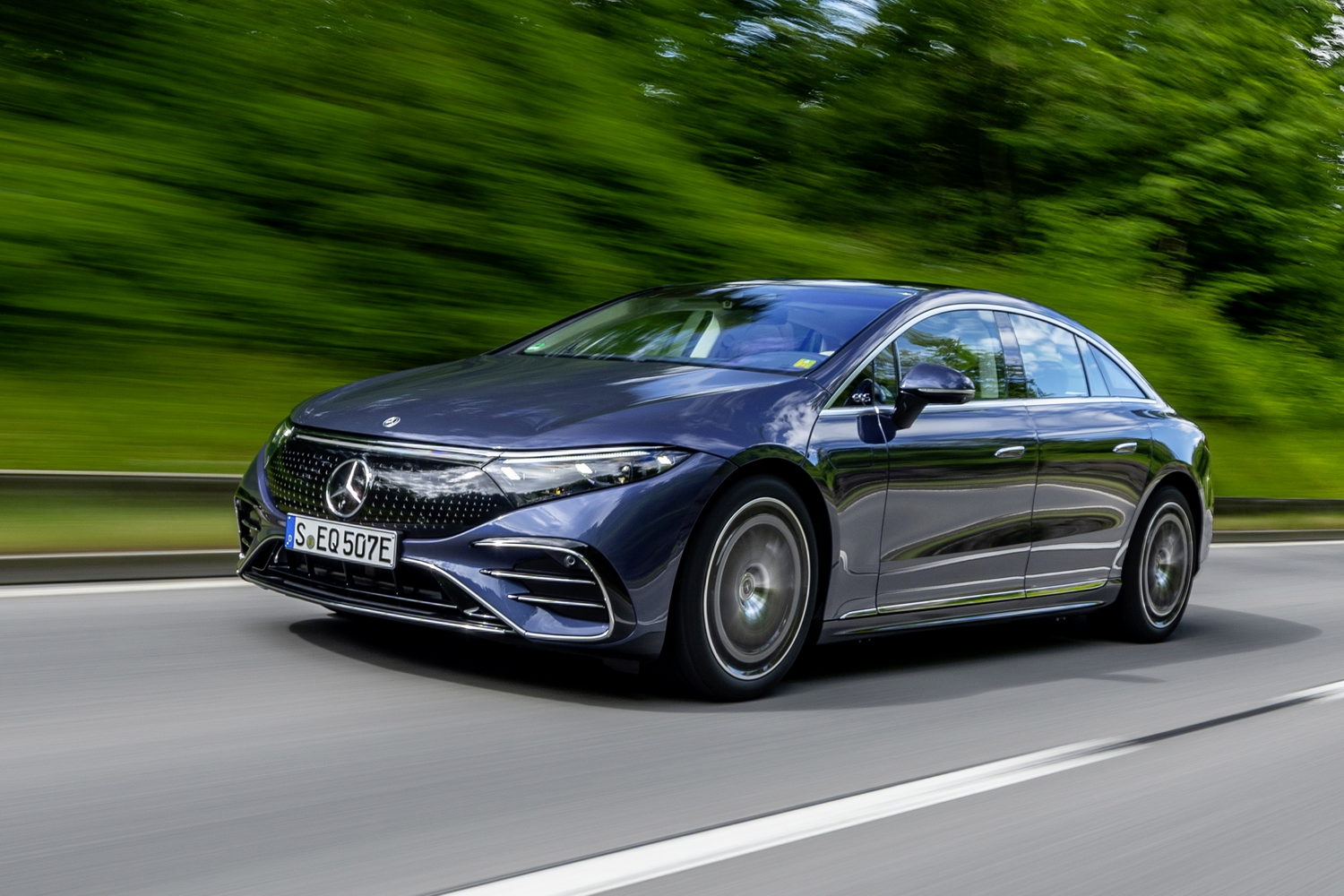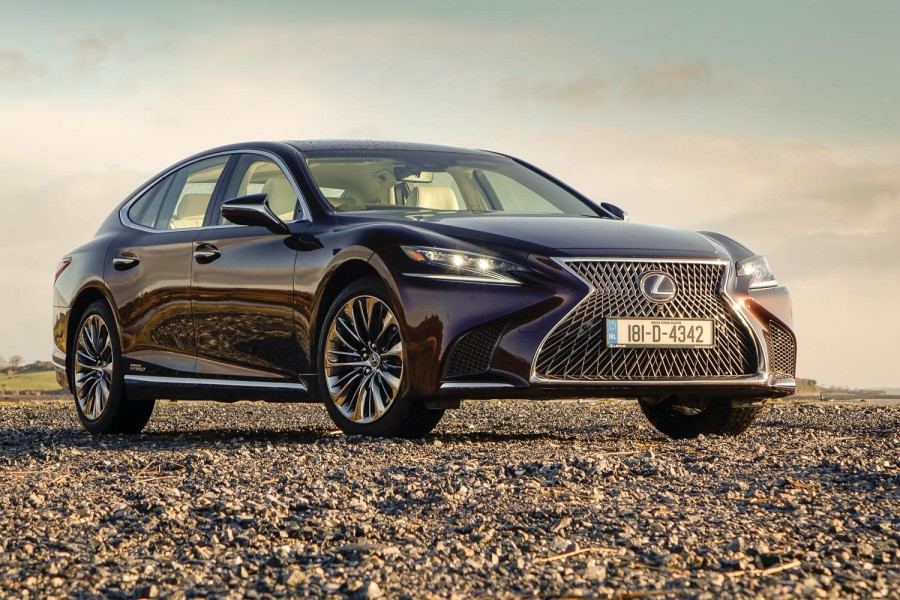Following six successive generations of BMW 7 Series, each introducing some form of innovation or new technology, comes the all-new 'G70' for 2023 and, for the first time, a fully electric model called the i7. The company's flagship saloon enters the electric age for those who desire it, offering all-wheel drive and an impressive driving range that should cater to the needs of the majority of its buyers.
In the metal
As is BMW's way of late, the styling of the i7 is polarising - from its vast kidney grilles (now illuminated around their perimeter) to the two-piece split headlight layout that is now a signature of the brand's luxury class models, including the recently updated X7.
Those split headlights comprise the daytime running lights in the thin upper section, and optionally can be equipped with a design that shines LEDs through Swarovski crystals to create a shimmering light effect as you approach the car at night. The main beam headlights are located in the lower section behind smoked glass to make them less obvious when not in use. For M Sport models, the redesigned front bumper does more to make this light section disappear.
Whereas previous generations of the 7 Series were available in two lengths, this time around, there is only one, and at 5.3 metres overall, it's an imposing car. There are no visible differences, other than some badges, between the 7 Series and i7, though in Excellence trim, the latter does get some subtle blue accents, including on the BMW roundel. The M Sport exterior loses that badging and most of the blue accents. As you can see, specification plays a big role in how this car can look.
To ensure it is as aerodynamic as possible, the exterior glass is designed to sit flush against the body and door frames. The glass is also thicker to make it quieter inside. The door handles aren't the usual pull type, either; instead, they sit flat against the bodywork, and you reach into a door to open it. Alternatively, with the automatic door option box ticked, any or all four doors can be opened or closed electrically, either by pressing the button on the respective handle, via a smartphone app or from the touchscreen inside. A set of sensors and ultrasonic scanners check for objects or people in the way before fully opening. The doors can be shut with the press of a button or by the driver. The driver's door can also be shut by holding their foot on the brake pedal.
Similar to several of BMW's more recent models, including the iX electric SUV, the i7 gets the company's 'Curved Display' dashboard. This widescreen design is made up of a 12.3-inch instrument display and a 14.9-inch touchscreen, integrated behind one panel. The new 'Interaction Bar' spans the lower section of the dashboard and extends into the doors. With a crystalline look it is illuminated from behind and displays various colours depending on driving mode and function, flashing red in the case of the hazard lights being activated, for example. Some touch-sensitive controls are set within this, and it neatly covers up the air vents, which are impressively slender.
The i7's front seats offer an almost endless amount of adjustment to help you find your ideal driving position, and you can have heating, cooling and even massage functions within them. As you'd hope, there is plenty of legroom in the rear seats. These can be made even more comfortable by choosing alternatives to leather upholstery, such as cashmere wool. The rear doors feature five-inch touchscreens that provide functionality for temperature settings, seat adjustment and operating the optional 'Theatre Display'.
Keen to usurp the competition when it comes to in-car entertainment, BMW has created a 31-inch 8k screen that electrically slides down from the roof while raising the rear blind to offer those in the rear a new way of watching their favourite Netflix shows or a film while on the move or when the car is charging up.
As the i7's battery is housed within the floor, it still accommodates 500 litres of boot space. Much like the front, the back of the i7 features slender LED lights that emphasise the car's width more than anything else.
Driving it
Silence is generally to be expected when travelling inside a 7 Series, but BMW doubled down its refinement efforts when creating the i7. The impressively low cabin decibel level is largely down to engineering rather than any noise-cancelling technology, though the latter is becoming a common feature in the industry.
For example, the electric motors are installed with special mounts that isolate them from the chassis to minimise any vibration. Even the heating, ventilation and air conditioning (HVAC) unit under the bonnet is encapsulated within a separate container to keep it quiet. Even the tyres are lined with foam to reduce road noise. The end result is an impressively serene driving experience that makes the i7 as nice to drive as to be driven in, especially over longer distances.
The heart of the i7 lies within the floor rather than under the bonnet. Despite its sizeable 101kWh battery, it stands no taller than the plug-in hybrid versions of the 7 Series. That varies slightly thanks to the standard-fit adaptive air suspension, which can raise the car's ride height by 20mm to provide more comfort when traversing speed humps or on poorer road surfaces. Conversely, when the Sport setting is selected, the car lowers by 10mm, and that happens irrespective of mode once the speed passes 140km/h.
That adaptive air suspension works in tandem with a 48-volt anti-roll stabilisation system to keep the car mostly free from any unsavoury pitch and yaw movements. It can actively adjust the body height on one side during cornering, which is quite obvious in positively cambered corners as you sense the car remaining flatter than the road surface would suggest it should. Tighter radii corners are no burden for the lengthy i7 as, if the optional Integral Active Steering is fitted, the rear wheels can turn up to 3.5 degrees in opposition to the fronts, reducing the apex angle. At low speeds or when parking, the rear-wheel steering reduces the car's turning circle by almost one metre.
BMW uses a dual-motor setup for the i7 xDrive60, where the rear axle motor produces 230kW (313hp) versus 190kW (258hp) on the front axle. Its power delivery is impressively smooth and both motors can propel the i7 from a standing start past 100km/h in 4.7 seconds - not bad for a car weighing 2,715kg. What's equally impressive is that while this car is capable of making tremendous progress, it still manages to do so without jolting you around the cabin. Having 745Nm of instant torque on hand does make much of that weight seem to melt away.
The i7 can get from point to point in fairly rapid time for such a car, though that's not really what this model is all about. Even with the standard variable ratio steering and rear-wheel steering, the i7 never feels that involving to drive. BMW says that the majority of its 7 Series customers prefer to drive, rather than be driven. It is a fine thing to drive, thought the steering isn't as sweet or honed as what you'll find in a 3 Series, for example.
Cars equipped with the M Sport package benefit from enhanced stopping power, which is before you consider the i7's adaptive recuperation. This optimises energy recovery when approaching a corner or junction. At its highest setting, it produces a one-pedal driving effect that is great for urban driving, too, and that type of setting is where its easiest to extract the longest driving range from the battery.
How close you'll get to matching BMW's official range will depend on how you drive, but during our time with the car it appeared to manage its consumption quite well given the mixed driving conditions. Its ability to quickly charge will also be a plus to prospective buyers, so long as the public network of rapid chargers continues to improve.
What you get for your money
There is currently only one electric powertrain available for the BMW i7, which is the xDrive60 tested here. Its 101kWh battery provides a WLTP driving range of between 591- and 625 kilometres.
Two specification grades are available, starting with the i7 Excellence, which costs from €135,731 on the road in Ireland. This gets more conservative exterior styling around the bumpers including the illuminated kidney grille surround and ride on modest 19-inch alloy wheels. The interior is well appointed as you might expect, with standard features including heated front and rear seats. BMW's online services provide connectivity to the Curved Display and driver assistance systems, including adaptive cruise control, parking assistant and the active guard suite of sensors.
The i7 xDrive60 M Sport has a starting price of €140,840 on the road, and adds a different body kit that does noticeably alter the look of the car, especially at the front. Interior equipment and specs are largely the same, with an M Sport leather steering wheel being one of the few differences. The Shadowline exterior trim switches the window surrounds to a gloss black, while large 20-inch wheels come as standard with the option of 21-inch wheels available.
There are, of course, lots of optional extras available to order. The paint options, such as the metallic and matt-effect finishes, cost from €1,354 to €3,077, while the two-tone paint is expected to cost more than €12,000 when it becomes available. Those shimmering 'Iconic Glow Crystal' headlights add another €2,215. If you prefer being driven, then the Executive Lounge Package is what you'll want, as it adds rear massage seats that include a fully reclining left seat, rear side window blinds, a central console and the 31-inch theatre display; a snip at €12,915. It is also possible to order the Theatre Screen separately.
Summary
The addition of electric power to the new 7 Series in the shape of the BMW i7 makes it even more luxurious. It is impressively hushed on the move and provides interior comfort that is right up there with the best luxury cars in the world. It can cover ground quickly, but does its best work when simply cruising, making each journey effortless. There are plug-in hybrid options within the 7 Series range, but this is the one you'll want.

